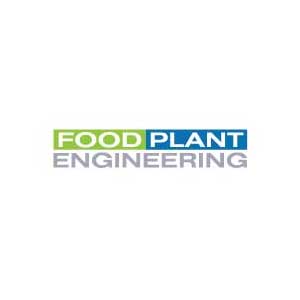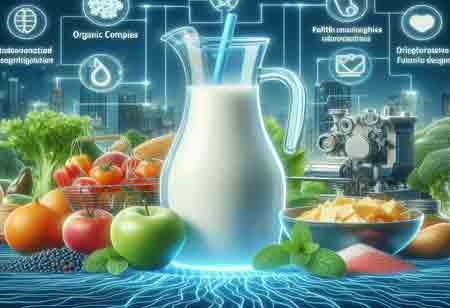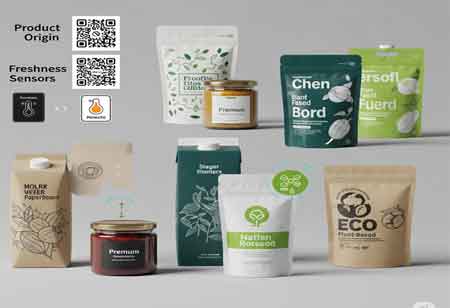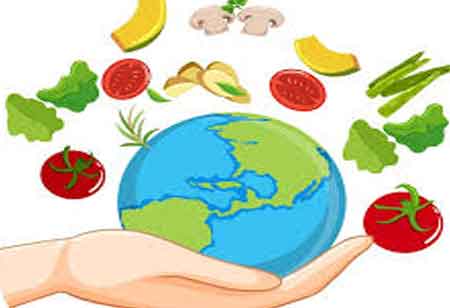\\\\ Top Food Facility Design Services \\\\
\\\\\\\\ Top Food Facility Design Services \\\\\\\\
-
Jedrziewski Designs
Jedrziewski Designs is a specialized interior design firm founded by Ric Jedrziewski, bringing 40 years of experience. The firm primarily focuses on two areas: interior design and food facility design. It serves a wide range of entities, including resorts, ski resorts, K-12 schools, universities, culinary arts institutions, corporate facilities and government facilities.
-
Camacho USA
Camacho USA is a Georgia-based foodservice and laundry facilities design & consulting firm established in 1968. With offices across the U.S., they specialize in architecting high‑volume, efficient kitchens and clean‑in‑place laundry systems for hospitals, schools, and more, prioritizing value, sustainability, and operational excellence.
-
Dennis Group
Dennis Group is a leading design-build firm specializing in food and beverage manufacturing facilities. With decades of experience, it delivers integrated engineering, architecture, and construction solutions that prioritize hygiene, efficiency, and innovation for global brands across bakery, dairy, protein, and packaged food sectors.
-
Food Plant Engineering
Food Plant Engineering is a design-build specialist crafting efficient, safe food production and cold storage facilities since 1953. They cover meat, dairy, bakery and prepared food sectors, blending smart automation, lean planning and sustainability to drive productivity, hygiene, and future-ready plant solutions.
-
Ricca Design
Ricca Design Studios brings nearly 50 years of culinary design expertise to foodservice spaces worldwide. From stadiums and universities to healthcare and hospitality, their chef-led, architect-powered team designs high-functioning, visually striking kitchens that delight guests and streamline back-of-house operations.
More in News
The Organic Approach to Delicious Low-Sodium Alternatives
Wednesday, September 24, 2025
Fremont, CA: In today’s health-conscious era, consumers are increasingly examining the nutritional content of their food, with sodium intake becoming a significant concern. High sodium consumption is linked to various health issues, including hypertension and cardiovascular diseases, which has sparked a global movement toward lower sodium diets. Companies that focus on organic foods, committed to using natural and wholesome ingredients, are leading this flavor revolution. It skillfully leverages technology and innovative culinary techniques to create low-sodium alternatives that do not compromise on taste. Leveraging Technology for Flavor Preservation Organic food companies are increasingly adopting advanced technologies to address the challenges of low-sodium food production while maintaining and enhancing natural flavors. One such innovation is High-Pressure Processing (HPP), a non-thermal pasteurization method that uses high hydrostatic pressure to inactivate harmful microorganisms. HPP extends shelf life without relying on high sodium levels as a preservative and can also positively influence food texture, an essential factor when sodium is reduced. For example, studies have shown that HPP helps retain the water-holding capacity of low-sodium processed meats. Another cutting-edge method is Pulsed Electric Fields (PEF), which employs brief bursts of electricity to permeabilize the membranes of microorganisms. This technique achieves effective pasteurization while preserving the food’s nutritional value and sensory characteristics, making it easier to reduce sodium content without compromising safety or taste. Advanced drying technologies, including freeze-drying and vacuum drying, are also being utilized to concentrate ingredients' natural flavors. These intensified flavors from vegetables, herbs, and spices allow manufacturers to enhance taste without additional salt. Furthermore, flavor encapsulation—a technique that involves coating flavor compounds with a protective layer—enables the controlled release of natural flavor enhancers during cooking or consumption. This method delivers a concentrated burst of flavor, effectively compensating for lower sodium levels in products such as processed snacks and ready-to-eat meals. Latest Developments and Information The growing demand for low-sodium organic foods continues to gain traction, driven by heightened consumer awareness and significant technological advancements. One key area of innovation involves natural flavor modulators, with companies developing compounds derived from plant extracts and fermentation processes to enhance the perception of saltiness. These modulators interact with taste receptors to mimic the flavor profile of salt, with lactic acid fermentation-based ingredients showing particular promise in amplifying savory notes and masking the off-flavors of salt substitutes. Another emerging trend is the integration of microbiomics in food development. Researchers are exploring how the microbiome and targeted fermentation techniques can naturally boost flavor in low-sodium products. By selecting specific microorganisms, manufacturers can cultivate ingredients with rich, complex flavors that reduce or eliminate the need for added sodium. Organic brands also embrace regional and ethnic culinary traditions, leveraging herbs, spices, and preparation methods that inherently rely less on salt. These culturally rooted approaches enhance flavor through aromatics, fermentation, and naturally occurring umami, aligning with the organic consumer’s preference for authenticity and clean ingredients. In line with clean-label expectations, sodium reduction strategies in the organic sector prioritize recognizable, natural ingredients over artificial enhancers or heavily processed substitutes. This approach resonates with health-conscious consumers seeking transparency and simplicity in their food choices. Organic food companies are demonstrating remarkable ingenuity in redefining flavor for health-conscious consumers. By strategically integrating advanced food processing technologies with innovative culinary techniques and a deep understanding of natural flavor profiles, they are successfully creating low-sodium alternatives that are both nutritious and delicious. The ongoing research and development in natural flavor modulators, microbiomics, and taste perception technologies promise an exciting future where reducing sodium in organic foods will not mean sacrificing the rich and satisfying tastes consumers crave. As health and wellness continue to be key drivers in the food industry, the commitment of organic brands to flavor innovation in the low-sodium space will undoubtedly shape the future of food.
How Modern Foodservice Brands Achieve Sustainable Growth
Tuesday, September 23, 2025
FREMONT, CA: The food service industry has a significant impact on the environment through its energy usage and waste production. Restaurants and other food establishments play a crucial role in promoting sustainability initiatives. Foodservice businesses have numerous opportunities to adopt eco-friendly practices that reduce environmental impact and promote sustainability. One key area is sustainable sourcing, prioritizing locally sourced, seasonal produce to cut transportation emissions and support local agriculture. Organic and fair-trade products enhance sustainability by encouraging ethical labor standards and responsible farming practices. Additionally, sourcing seafood from sustainable fisheries is essential to protecting marine ecosystems. Waste reduction and management are other crucial focuses. Businesses can minimize food waste by implementing precise inventory control, proper storage, and creative menu planning. Establishing composting and recycling programs and conducting regular waste audits helps identify and address inefficiencies. Conservation efforts should extend to energy and water usage by investing in energy-efficient equipment, such as LED lighting and Energy Star-certified appliances. Water-saving measures, including low-flow fixtures and leak management, further enhance resource efficiency while integrating renewable energy sources like solar power, which reduces dependence on fossil fuels. Sustainable packaging plays a significant role in minimizing waste. Reducing single-use plastics through reusable containers and utensils and selecting biodegradable and compostable packaging for takeout supports environmental goals. Additionally, limiting unnecessary packaging helps reduce overall waste generation. Employee engagement is vital to sustaining these efforts. Providing staff with sustainability training and incentivizing participation fosters a culture of environmental responsibility. Educating customers about sustainability initiatives can also drive broader awareness and adoption of eco-friendly practices. Sustainable sourcing extends beyond local procurement, encompassing regional and national partnerships that promote environmentally responsible agriculture while minimizing transportation impacts. A shift toward plant-based menu options can significantly reduce the environmental footprint associated with meat production, curbing greenhouse gas emissions and deforestation. Collaborating with farmers practicing regenerative agriculture enhances soil health, mitigates erosion, and aids in carbon sequestration, fostering a more resilient food system. Efficient waste reduction and management play a pivotal role in sustainability efforts. Implementing on-site composting systems diverts food waste from landfills and generates nutrient-rich soil for local gardens or farms. Exploring anaerobic digestion technologies can convert food waste into biogas, providing a renewable energy or transportation fuel source. Additionally, partnering with food recovery programs enables surplus food donation, supporting communities while minimizing waste. Energy and water conservation are essential for reducing operational footprints. Investing in renewable energy sources like solar panels and wind turbines decreases reliance on fossil fuels. Greywater recycling systems repurpose water from sinks and showers for irrigation and other non-potable uses, promoting resource efficiency. Integrating smart grid technologies further optimizes energy consumption, mitigating peak demand and enhancing overall sustainability. Sustainable packaging solutions are critical to reducing environmental impact. Adopting plant-based, biodegradable packaging materials such as sugarcane or bamboo aligns with eco-friendly practices. Reusable packaging programs for takeout and delivery encourage container returns, fostering circular economies. Collaborating with suppliers to develop innovative packaging further drives industry-wide sustainability efforts. Building a culture of sustainability within the workforce is vital to long-term success. Establishing employee-led sustainability committees empowers staff to lead initiatives and take ownership of environmental goals. Regular training sessions provide education on best practices while recognizing and rewarding sustainability champions, reinforcing commitment and motivating continuous improvement. Leveraging technology and innovation accelerates progress in sustainable operations. AI-powered tools can predict food demand, minimizing overstocking and waste. Blockchain technology enhances supply chain transparency, ensuring ingredient traceability and ethical sourcing. Immersive VR training offers engaging educational experiences, equipping employees with the skills to adopt sustainable practices effectively.
The Impact of Culinary Tourism on Hospitality and Travel Promotion
Tuesday, September 23, 2025
FREMONT, CA: Culinary tourism, also known as food or gastronomy tourism, is a rapidly growing segment of the travel industry. It involves visiting various destinations to discover their unique food and beverage offerings, which can include dining at starred restaurants, exploring local markets, and sampling authentic street food. The Appeal of Culinary Tourism Culinary tourism has gained immense popularity due to its ability to offer authentic cultural experiences and unique adventures. Food is deeply intertwined with culture, serving as a gateway to understanding a destination’s history, traditions, and way of life. By exploring local cuisine, travelers can connect more intimately with the essence of a place. Additionally, the thrill of discovering new flavors and dishes creates unforgettable memories and adds an element of adventure to travel. The growing global fascination with food, fueled by food media and social platforms, has also driven interest in experiencing cuisine firsthand. Culinary tourism often aligns with sustainability goals by supporting local producers and promoting eco-friendly food practices, making it an appealing choice for socially conscious travelers. Culinary tourism offers a variety of experiences tailored to different preferences. Fine dining allows visitors to indulge in Michelin-starred restaurants and high-end gastronomy, while street food tours bring the vibrant flavors of local markets to life. Cooking classes provide hands-on opportunities to learn traditional recipes from experienced chefs, and wine-tasting tours let travelers savor local vintages at vineyards. Farm-to-table experiences showcase the journey of ingredients from production to plate, while food festivals celebrate regional culinary traditions and culture. The Future of Culinary Tourism The evolving landscape of culinary tourism is poised to be shaped by a strong emphasis on sustainability, technological innovation, and hyperlocal experiences. Growing environmental awareness drives a demand for sustainable and ethical food tourism, with travelers increasingly seeking experiences that align with their values. Technology, particularly virtual reality (VR) and augmented reality (AR) has the potential to transform the way tourists engage with culinary destinations, offering immersive and interactive ways to explore gastronomy. Meanwhile, the appeal of hyperlocal experiences continues to rise, with travelers showing a preference for authentic encounters, such as dining at small, family-run establishments or connecting with local food producers to gain deeper insights into regional culinary traditions. Culinary tourism provides a unique and enriching travel experience that goes beyond sightseeing. By immersing oneself in the local food scene, travelers can better understand a destination's culture, history, and way of life. As the industry evolves, a continued focus on sustainability, innovative technology, and hyperlocal experiences ensures culinary tourism remains a vibrant and rewarding way to explore the world.
Reimagining the Role of Food Packaging in a Global Market
Monday, September 22, 2025
The food packaging industry stands as an essential pillar within the global food system, constantly evolving to meet the multifaceted demands of preservation, convenience, and increasingly, environmental responsibility. At its core, food packaging serves several critical functions. It acts as a primary barrier, protecting food from external contaminants, light, oxygen, and moisture, thereby preserving freshness, nutritional value, and sensory attributes. Beyond protection, packaging plays a vital role in extending shelf life, reducing food waste, and facilitating efficient transportation and storage across complex supply chains. Moreover, it serves as a crucial communication platform, conveying essential product information, branding, and usage instructions to consumers. Traditional Materials: Strengths and Limitations The materials landscape in food packaging is incredibly diverse, ranging from traditional options to innovative alternatives. Plastics, including polyethylene (PE), polypropylene (PP), and polyethylene terephthalate (PET), continue to dominate due to their versatility, light weight, and barrier properties. However, there's a significant shift towards enhanced recyclability and the incorporation of recycled content, such as recycled PET (rPET), to minimize the reliance on virgin resources. Glass, with its inert nature and premium appeal, remains a popular choice for beverages and preserves, particularly as reusability initiatives gain traction. Metals, primarily aluminum and steel, offer excellent barrier protection and are widely recycled, finding applications in cans and foil. Paper and paperboard, sourced from sustainably managed forests, are experiencing a resurgence, especially with the development of advanced coatings that enhance barrier properties and moisture resistance, making them suitable for a broader range of food products. Innovations in Material Science Innovation in material science is a key driver of industry evolution. The development of advanced barrier technologies, often involving multi-layered structures or specialized coatings, is crucial for extending the shelf life of perishable goods by effectively blocking oxygen and moisture. Beyond traditional materials, the industry is seeing rapid advancements in bio-based and biodegradable materials. Bioplastics derived from renewable resources like corn starch, sugarcane, or algae, such as Polylactic Acid (PLA) and Polyhydroxyalkanoates (PHAs), offer compostable alternatives that break down more readily in industrial or home composting environments. Edible packaging, made from materials like seaweed, rice starch, or milk protein, represents a frontier in waste reduction, offering a truly zero-waste solution for specific food items. Beyond materials, technological innovations are reshaping the functionality of food packaging. Active packaging solutions incorporate additives or scavengers within the packaging material to actively interact with the food or its environment. Examples include oxygen scavengers that absorb residual oxygen, moisture absorbers that control humidity, and antimicrobial agents that inhibit microbial growth, all contributing to enhanced food safety and extended freshness. Intelligent or smart packaging represents another significant leap forward, integrating sensors, indicators, and connectivity features. Time-temperature indicators (TTIs) visibly change to reflect temperature excursions, providing real-time insights into product freshness. Gas sensors detect spoilage gases, offering a more accurate assessment of food quality than traditional "best by" dates. The integration of QR codes and RFID tags facilitates product traceability, allowing consumers to access detailed information about origin, ingredients, and handling, while also enhancing supply chain efficiency and product authentication. The Internet of Things (IoT) is also beginning to influence food packaging, enabling connected packaging that can communicate with smart devices, offering personalized user experiences and real-time data monitoring. The Future of Food Packaging: Trends and Sustainability The design philosophy within the food packaging industry is also evolving. There's a growing emphasis on minimalist design, utilizing less material without compromising product protection. This approach not only reduces resource consumption but also aligns with contemporary aesthetic preferences. Monomaterial packaging, designed with a single type of polymer, is gaining prominence as it simplifies the recycling process compared to multi-layered laminates. Reusability models, involving refillable containers and closed-loop systems, are being explored and implemented to minimize single-use waste and promote circularity. Customization and personalization are also key trends, with digital printing enabling brands to create unique and engaging packaging for limited editions, seasonal promotions, or direct consumer engagement. Ensuring food safety and adhering to stringent regulatory frameworks remain paramount for the food packaging industry. Regulatory bodies globally, such as the U.S. Food and Drug Administration (FDA) and the European Food Safety Authority (EFSA), set rigorous standards for materials that come into contact with food. These regulations cover aspects such as material composition, potential chemical migration into food, and the use of additives. Comprehensive testing protocols, including chemical analysis and migration testing, are essential to demonstrate compliance and safeguard consumer health. Labeling requirements are equally critical, ensuring that packaging accurately conveys nutritional information, ingredients, allergens, expiration dates, and country of origin, empowering consumers to make informed purchasing decisions. Traceability systems, often facilitated by smart packaging technologies, are vital for tracking products throughout the supply chain, enabling swift and targeted responses in the event of a product recall. Environmental considerations are also increasingly integrated into regulatory frameworks, with directives aimed at reducing packaging waste and promoting the use of recyclable and biodegradable materials. The food packaging industry is poised for continued growth and innovation. The demand for convenient, safe, and sustainable packaging solutions will only intensify, driven by evolving consumer lifestyles, increasing awareness of environmental impact, and the rapid expansion of e-commerce. Further advancements in material science, particularly in the realm of bio-based and compostable materials with enhanced barrier properties, will be crucial. The integration of artificial intelligence and machine learning into packaging design and production processes promises greater efficiency and optimization. The industry will continue to navigate the complex interplay between functionality, cost-effectiveness, and environmental responsibility, with a clear trajectory towards a more circular economy where packaging materials are kept in use for as long as possible, minimizing waste and maximizing resource value. The future of food packaging is one of continuous adaptation and innovations, striving to deliver solutions that protect food, inform consumers, and contribute to a more sustainable world.
Navigating Food Import Challenges with Effective Solutions
Monday, September 22, 2025
Fremont, CA: Navigating the complexities of food imports is a significant challenge, mainly due to the diverse and constantly changing regulations regarding food safety, labeling, and quality standards. Each country has its own set of rules, and failing to comply with these regulations can result in serious consequences, including costly delays, financial penalties, and product recalls. To effectively address these challenges, importers must stay up-to-date on regulatory changes and establish strong relationships with compliance experts who are knowledgeable about both local and international standards. Investing in staff training and conducting regular compliance audits will ensure that all parties involved in the import process are well-informed. Managing Supply Chain Disruptions Food imports are inherently vulnerable to disruptions from various factors, including natural disasters, geopolitical unrest, labor strikes, and public health crises like pandemics. Such disruptions can lead to costly delays and stock shortages, directly affecting businesses that rely on timely delivery of perishable goods. To mitigate these risks, importers should consider diversifying their supplier networks to avoid dependency on a single source. Utilizing technology for real-time tracking and predictive analytics can help companies foresee potential disruptions and respond swiftly. Additionally, maintaining a strategic inventory buffer can help ensure product availability in the face of temporary supply chain issues. Ensuring Quality and Navigating Customs Procedures Maintaining the quality and safety of imported food products poses another significant challenge. Long transit times, varying climate conditions, and the risk of mishandling during transportation can compromise product quality, especially for perishables. Importers should collaborate with reliable suppliers who meet stringent quality standards, and they should conduct thorough inspections upon arrival. Implementing advanced packaging solutions, such as temperature-controlled containers and vacuum sealing, can greatly enhance the preservation of food products in transit. At the same time, navigating customs procedures and tariffs presents additional complexities. Each country has its own customs requirements, and errors can lead to delays and fines. Changes in trade policy, such as new tariffs or restrictions, can complicate the forecasting process for importers. Partnering with experienced customs brokers can ease the burden of managing paperwork and ensure compliance. Understanding tariff codes is crucial to prevent costly misclassifications while staying abreast of global trade policy developments, which can help businesses adapt their pricing strategies to mitigate the financial effects of new tariffs.
The Essential Role of Oils and Fats in Cooking
Friday, September 19, 2025
FREMONT, CA: Oils and fats, derived from both plant and animal sources, play a crucial role in culinary practices and nutrition by delivering essential nutrients, enhancing flavor, and improving food texture. In addition to their dietary significance in various industrial applications. While they offer numerous benefits, oils and fats also present potential health and environmental drawbacks when misused or overconsumed. Pros: Nutritional Benefits and Culinary Versatility Source of Essential Fatty Acids: Oils and fats are rich sources of essential fatty acids, like omega-3 and omega-6, which the body cannot produce independently. These fats are critical for reducing inflammation, maintaining robust cell membranes, and enhancing mental performance. Energy Source: Fats are rich energy sources since they have more than twice as many calories per gram as proteins or carbohydrates. Lipids have a high energy density, making them essential for meeting daily caloric requirements and sustaining physical activity. Enhances Flavor and Texture: In cooking, oils and fats contribute to the sensory appeal of food by improving flavor, imparting richness, and creating desirable textures. Whether used for sautéing, frying, baking, or salad dressings, oils and fats are integral to creating diverse and satisfying culinary experiences. Nutrient Absorption: Certain vitamins, such as A, D, E, and K, are fat-soluble, requiring fats for absorption and transportation within the body. Incorporating healthy fats into meals helps ensure efficient absorption of these essential nutrients. Versatility in Cooking Methods: The optimal cooking methods for different types of oil depend on their smoke point. Extra virgin olive oil and other oils with lower smoke points are better used in salad dressings and low-heat cooking; avocado and peanut oils, however, have more excellent smoke points and are ideal for frying. Cons: Health Considerations and Environmental Impact High Caloric Density: Even while fats are an essential source of nutrients and energy, if consumed in excess and are not balanced with overall calorie intake and physical exercise, they can cause obesity and weight gain. Saturated and Trans Fats: Certain fat sources, especially those derived from animal products and partially hydrogenated oils, contain high concentrations of saturated and trans fats. Excessive consumption of these fats can elevate cholesterol levels and heighten the likelihood of cardiovascular ailments. Environmental Impact: The production of oils, especially palm oil and soybean oil, has raised concerns about deforestation, habitat destruction, and biodiversity loss in regions where these crops are cultivated. Sustainable sourcing practices and certifications are crucial for mitigating these environmental impacts. Processing Methods: Oil refining and processing can diminish their nutritional quality by reducing levels of beneficial compounds such as antioxidants and phytochemicals. Opting for minimally processed or cold-pressed oils preserves more of their natural nutrients. Allergies and Sensitivities: Some people may be allergic to or sensitive to particular oils, including soybean or peanut oil. It's critical that those with known allergies carefully read labels and avoid oils that could cause negative responses. Balancing Consumption for Health and Sustainability To harness the benefits of oils and fats while mitigating potential drawbacks, consider the following tips: Choose Healthy Fats: Choose unsaturated fats; these have been connected to lowering cholesterol and decreasing the risk of heart disease. For instance, these fats can be found in olive oil, avocado, canola, almonds, and seeds. Moderation is Key: Consume fats in moderation and maintain a balanced diet rich in various nutritious foods, including fruits, vegetables, lean meats, and whole grains. Read Labels: Pay attention to labels and choose oils and fats that are minimally processed and free from harmful additives or trans fats. Consider Sustainability: Select oils labeled sustainably sourced or certified by groups such as the Roundtable on Sustainable Palm Oil (RSPO) to support sustainable practices.















